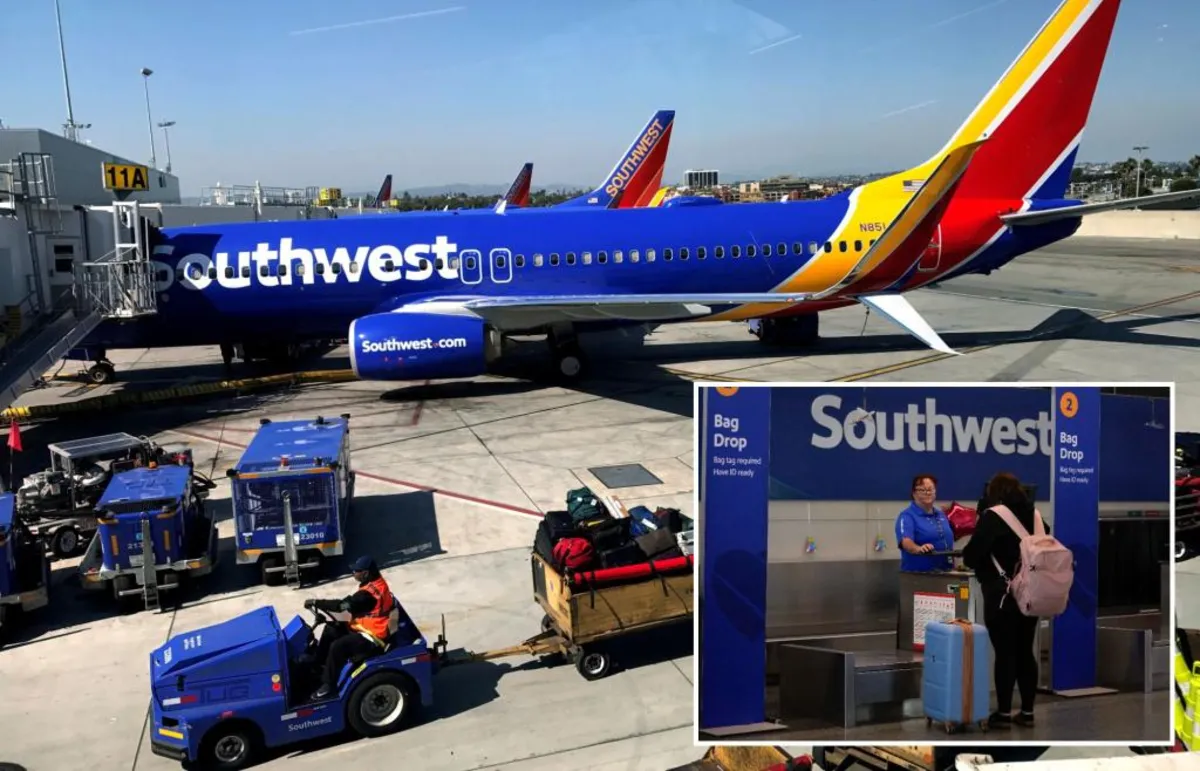
Southwest Airlines has made headlines as the latest US carrier to withdraw its financial forecast on Wednesday, signaling a growing concern within the industry. The ongoing trade war initiated by President Trump has created significant uncertainty for airlines, reminiscent of the challenges faced during the COVID-19 pandemic. With consumers hesitant in the face of a potentially deteriorating economy, airlines are grappling with the difficulty of accurately predicting their business performance.
Travel is often categorized as a discretionary expense for both consumers and businesses. The trade war has heightened fears of slower economic growth and rising inflation, causing both tourists and corporations to tighten their belts. This shift has led to a noticeable pullback in travel spending. In light of these economic conditions, Southwest Airlines announced it could not reaffirm its previous profit forecast of $1.7 billion in earnings before interest and taxes for 2025, and approximately $3.8 billion for 2026. The airline stated, “Amid the current macroeconomic uncertainty, it is difficult to forecast given recent and short-lived booking trends.”
Following this announcement, Southwest's shares dropped by 3% in after-hours trading. Other airlines, including Alaska Air Group, also retracted their profit forecasts for 2025, citing similar economic uncertainties. Earlier in the month, both Delta Air Lines and Frontier Airlines eliminated their forecasts, while United Airlines took the unusual step of providing two different forecasts, emphasizing the unpredictability of the current macroeconomic environment.
This situation marks a dramatic turnaround for US carriers, which were once optimistic about entering a new golden age of air travel just two months ago. Strong travel demand and limited capacity had fueled hopes for a multi-year profit boom. However, airlines like Southwest, which primarily serve price-sensitive leisure travelers and focus on the US domestic market, find themselves in a more challenging position. Currently, the domestic travel market is softer, prompting airlines to lower fares to stimulate demand.
Consumer spending is particularly weak among lower-income households, and Southwest has reported a decline in domestic leisure travel bookings throughout the March quarter. This decline is more pronounced compared to competitors like Delta and United. The company anticipates a drop in its unit revenue—a key indicator of pricing power—by as much as 4% from the previous year in the current quarter.
The weakening demand for travel has compounded Southwest's challenges, as the airline strives to regain stability after the disruptions caused by the COVID-19 pandemic. The company has been under pressure to revamp its business model, prompting significant changes. Last year, Southwest decided to end its long-standing open seating policy, a hallmark of its brand for over 50 years. More recently, in March, the airline announced it would begin charging customers for checked bags, a shift away from its unique policy of offering this service for free.
Despite these changes, Southwest has reported no evidence of customers abandoning the airline following the new policies. CEO Bob Jordan announced that the airline plans to introduce basic economy and bag fees next month, while also preparing to sell assigned and extra legroom seats starting in the September quarter. In a proactive measure to protect its margins amid the softening demand, Southwest is reducing flight capacity in the latter half of the year.
In the first quarter, Southwest reported an adjusted loss of 13 cents per share, which was better than the 18 cents per share loss analysts had expected, according to LSEG data. The company is scheduled to discuss its financial results in a call with analysts and investors on Thursday, providing further insights into its strategies and outlook amidst these challenging economic conditions.